This entry is also available in: Russian Chinese (Traditional)
At the beginning of the 20th century, Japan entered a new era of global motorization. Two “Research Institutes” were established for this purpose, engaged in the development of engines for aircraft and motorcycles. These two directions went “side by side”, but development went slower than in the West – most of the equipment was imported cars and motorcycles of famous brands: Brough Superior, Moto Guzzi, Harley-Davidson, Ford, etc.
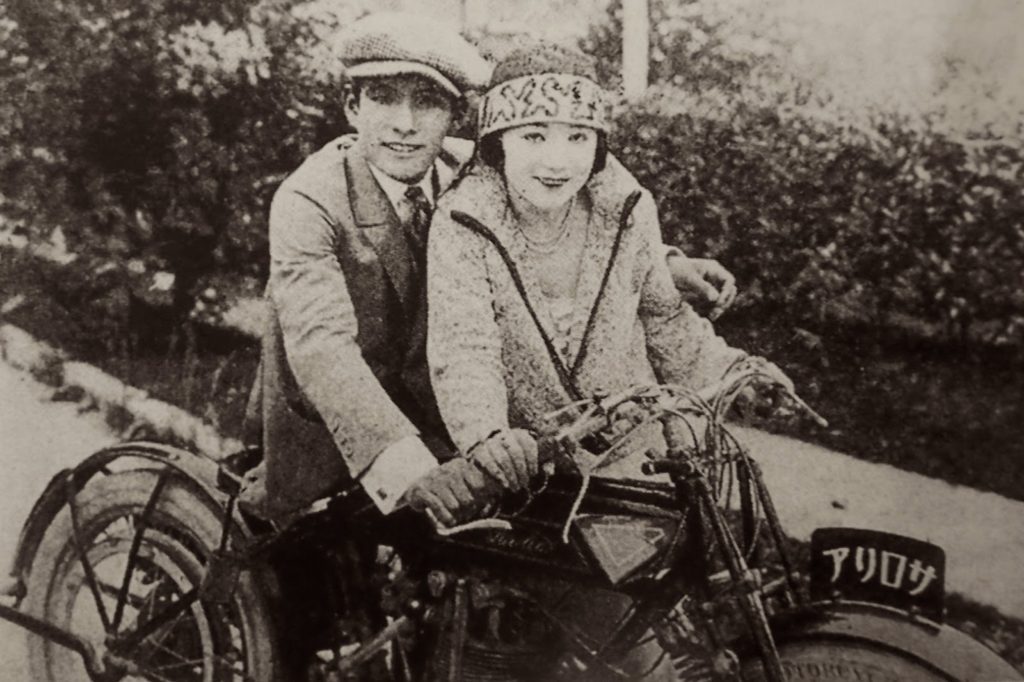
This situation changed after the Great Kanto Earthquake on September 1, 1923. In restoring Tokyo’s infrastructure, ground vehicles not tied to specific infrastructure showed the greatest efficiency: tricycles, trucks and buses, which, unlike trains, whose tracks was blocked due to kilometers of destroyed rails, continued to work for the good of the country. As a result of this disaster, Japan showed an “explosive” growth of wheeled vehicles: if there were 16,682 vehicles with internal combustion engines in 1923 Japan-wide, then 3 years later, in 1926, their number more than doubled – to 38,824 vehicles.
In the mid-1920s the Japanese government began to impose protective duties on the import of cars and motorcycles in order to help local industries. Also, due to the increase in the number of cars and motorcycles, the government was concerned about road safety in advance and for the first time in the history of Japan imposed restrictions on driving a vehicle with engines over 750 cc. (since 1934, the requirements have been tightened to a maximum volume of 500 cc.) Those drivers of cars and motorcycles with an engine capacity of less than 750 cc. had a requirement to inform the government about such a desire, but no exams and restrictions were provided, except for the age – the driver must be over 16 years old.
It is worth noting that … American technology had a great influence on the engineering school of Japanese industry. And the point here is not only that most of the equipment supplied to Japan was American, where among the total abundance of brands you can find such companies as: Chevrolet, Chrysler, Ford or Harley-Davidson. And not so much that the first examples of the Japanese transportation industry were based on the British and American models, which underwent reverse engineering.
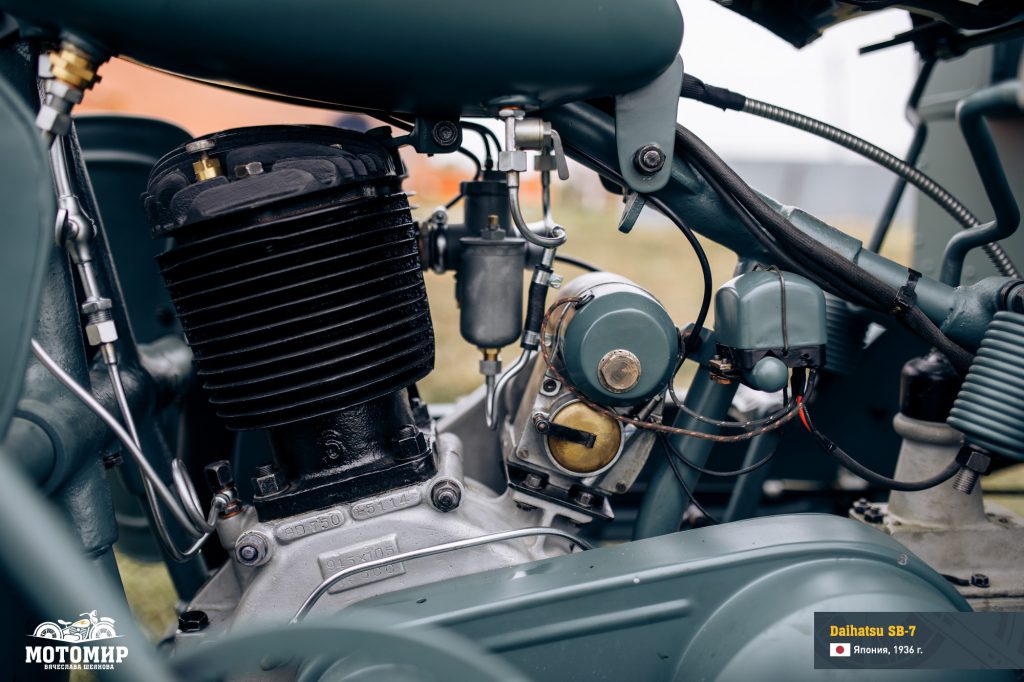
It seems to us that the answer lies in the technologies that the Japanese engineers got on absolutely legal grounds: we have already told the story about the Harley-Davidson plant in an article about one of the world’s rarest Kurogane Type 95 motorcycles, but we have some more exciting stories “in stock”.
A further excursion into the history of the Japanese industry seems unnecessary, but each of the stories told will help us to correctly assess the tricycle that we are talking about today.
Company New Era (Kurogane)
First, we will focus on the history of New Era, which began the production of tricycles in 1927. The first models were more reminiscent of “rickshaws” with a bicycle frame, where instead of the forces of the driver’s legs, the power of an internal combustion engine was used. Starting with 350 cc. models, New Era (Nihon Jidosha, 1928-1936) was parallely producing body panels for Datsun (DAT Automobile Manufacturing Co., Ltd.) and continued to improve its tricycles.
By the beginning of 1934, the difference in the paths followed by the Japanese motorcycle industry and the rest of the world (with the exception of Italy) began to catch the eye even to the uninitiated – there was no transport more popular in Japan in the 1930s than the tricycle.
The working volume of the engines was constantly increasing, production was localized and became more and more independent from the outside world, and its own engineering school appeared. Against the background of the ongoing changes, the Japanese government began preparations for a war with China – investments in the development of mechanized vehicles increased and the nationalization of industries began. Under the decree of Emperor Hirohito (1926 – 1989), companies merged and formed conglomerates, each of which had to produce its own limited type of product.
Despite the forced merge, by 1936, a great variety of three-wheeled vehicles could be found on the Japanese market, but throughout the country, the main manufacturers of those years were Daihatsu, Mazda and New Era.
In 1936, New Era changed its name to Nihon Nai-Enki Seizo KK (1936-1957), and from 1937 all new models received a new designation – Kurogane. The 1937 truck lineup consisted of models with 650, 750 and 1200 cc. engines. Kurogane tricycles have been used in all areas, from cargo delivery and passenger transportation to the use of government services as special vehicles.
Although at first glance it may seem to you that all Japanese tricycles are “as like as two peas”, there are some features that distinguish the New Era (Kurogane) tricycle from competitors – this is a uniquely shaped parallelogram fork with a lot of rivets.
Japan fire tricycles
Earlier we wrote that the earthquake of 1923 became the impulse for the growth of local industries, however, as mentioned at the beginning of the article, mechanization began long before this date, as evidenced by photographs and cartoons of the corresponding period. From all the available information, we will choose 1918 as a starting point, when a mechanical pump for pumping water was purchased for a fire-fighting crew in one of the regions of Japan.
Five years later, after the terrible earthquake of 1923, the name of Kosaku Yamada, the composer of the famous children’s song Akatombo (“Red Dragonfly”) emerges in the history of Japanese fire engines. He was so impressed by the devastating fire caused by the Great Kanto Earthquake of 1923 that he set about developing his own fire engine. Together with his brother, he modified an imported motorcycle into a tricycle equipped with a fire pump. On August 26, 2013, a photograph of Yamada was published, taken during the first tests of a fire pump capable of providing a jet of water up to 30 meters high.

Another evidence of the use of three-wheeled equipment for extinguishing fires is the records of 1927, when, to help the only pump in the service of the fire-fighting crew of the village of Yakumo (Hokkaido), which could break at any moment, a Northern gas pump with a capacity of 23 hp. was purchased. (made in the USA). It is especially noted that although the pump was much more efficient than the first one, transport mobility was the weak point of the new fire engine. In this regard, in 1937, still, with donations, a Chevrolet truck was bought, which greatly simplified the life of firefighters and increased the speed of response of the firefighting crew.
Unfortunately, there are no photos of the pump on the truck, but below we attach an image of a fire tricycle purchased for the Yakumo fire-fighting crew in 1945 and equipped with a water pump powered by a Ford V8 engine.
A similar tricycle from 1937, which also has a pump with a Ford V8 engine, is kept in one of the Japanese museums – further evidence that these cars were widespread in pre-war Japan.
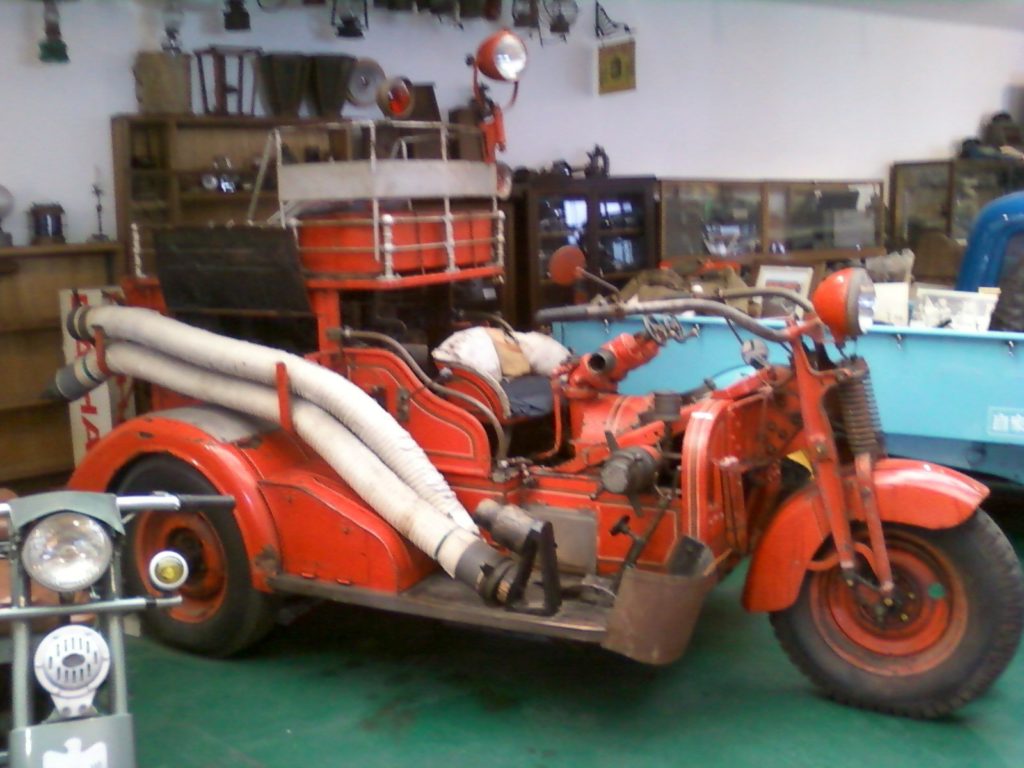
Zaibatsu Nissan
We will allow ourselves one more side step. As we mentioned earlier, the Japanese government has made significant efforts to combine “small” factories into entire production clusters. So, in March 1933, Ishikawajima Automotive Works and DAT Automobile Manufacturing Inc. merged to form Automobile Industries Co., Ltd., which began production of Isuzu trucks in 1934.
At the same time, there were changes in the structure of the Nissan zaibatsu: in 1931, DAT Automobile Manufacturing Co., Ltd., which originally produced Datson (Datsun) cars, formed ties with Tobata Casting, as a result of which the company was reorganized in 1933. A subsidiary of DAT Jidosha-Seizo Co., Ltd. was relocated to Yokohama and Tobata Casting took over a large automotive division. As a result of these mergers, engineer William R. Gorham, then at DAT, gained the much-needed capacity to carry out his plans.
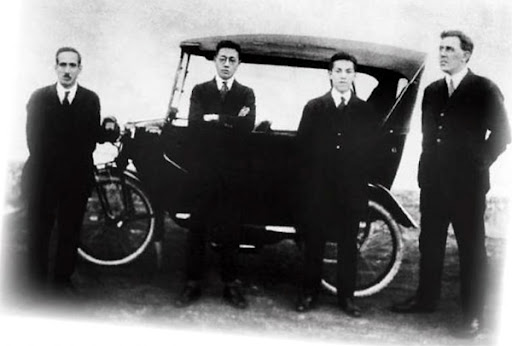
Through his direct influence, Nissan used American technology to produce its own 6-cylinder, low-valve engines, the first casting of which was completed at the factory structures of Nissan in 1937.
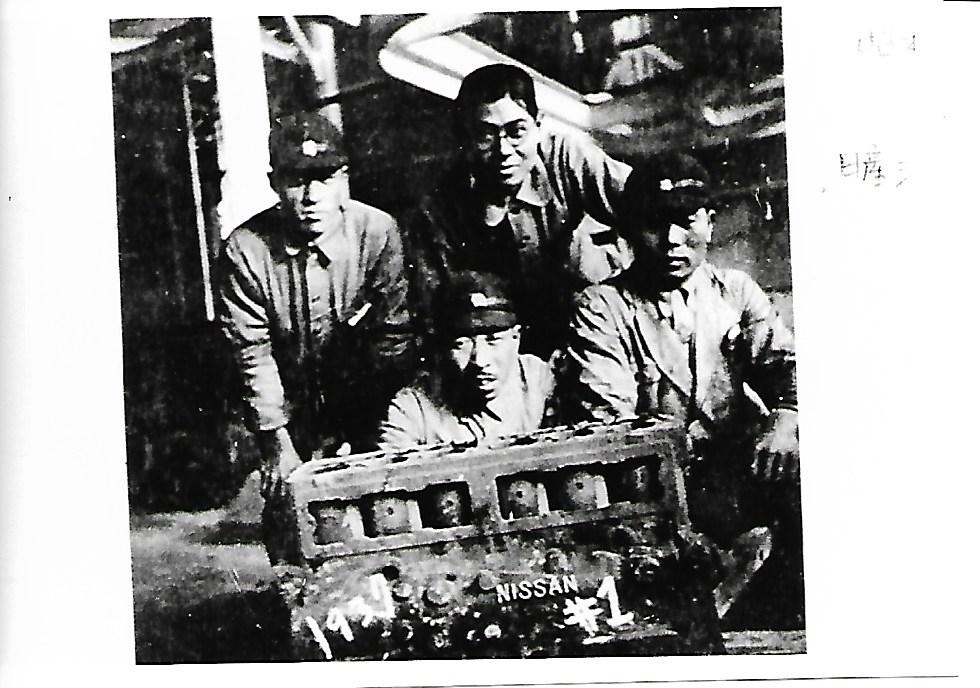
It is not without reason that William Gorham had such an influence – the “creator” of Nissan, Yoshisuke Ayukawa, promoted the use of American technology in car production
However, as with Rikuo motorcycles, Nissan’s history has not been without foreign technology.
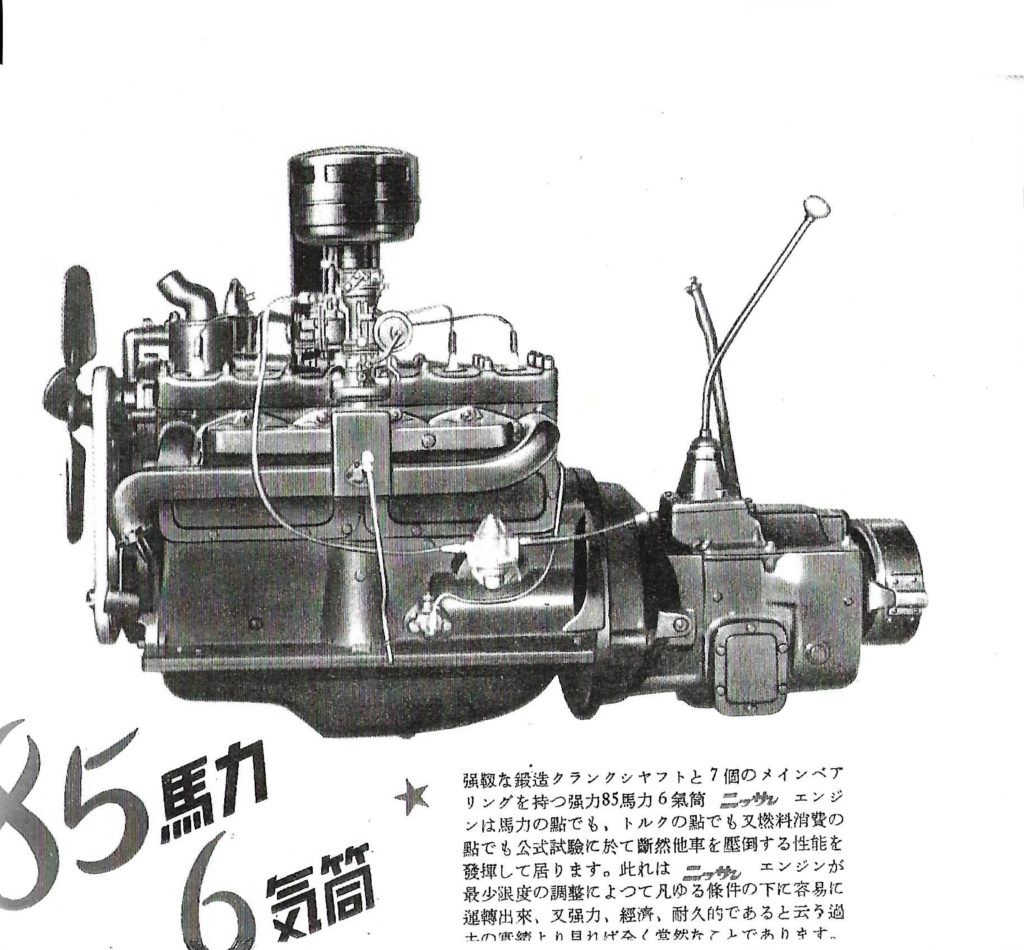
The three Graham brothers were involved in the production of trucks based on Dodge Brothers engines, which were sold through the Dodge dealer network. In 1927, as a result of a disagreement with Dodge, the Graham brothers decided to found a new company – Graham-Paige.
In 1933, in the midst of the Great Economic Depression, due to the dire economic situation, the American company Graham-Paige made the fateful decision – to sell the assembly line and all technological drawings of Graham-Paige Type 73 cars to representatives of the Japanese auto industry. In order not to bore you with details, we suggest looking at the photos of the Graham-Paige car and comparing them with the photos of the prestigious Nissan Type 70 sedan.

I hope we have closed the question with where the roots of the Japanese cars of now famous brand grow from.
Tricycle 1941 Kurogane Model 1 “Fire trike”
Now let’s go back to the history of the tricycle we found in Malaysia, and summarize the “volume” of information presented above.
We learned from a native Malaysian seller that this tricycle was once used by a local fire-fighting crew, but after the water pump engine seized up, it was sent to rest. We were not able to get detailed photos until the moment of delivery to the workshop, but there was a detail that gave us hope that it was a worthy sample of pre-war Japanese technology, manufactured by the Kurogane company. This part is a unique front suspension.
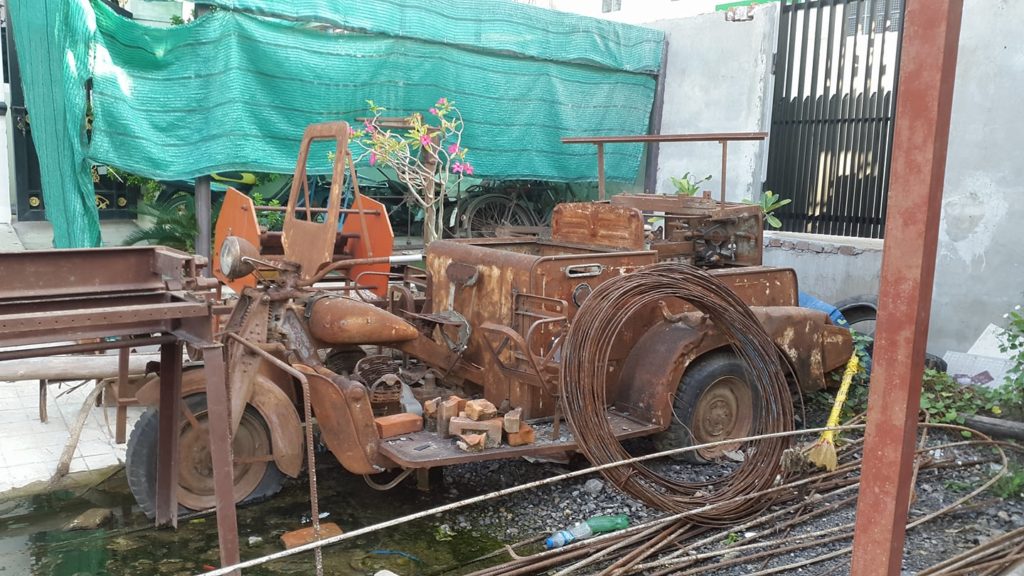
Later, after conducting a detailed study, we came to the conclusion that, unlike the three-wheeled vehicle found in the Krasnoyarsk region, the car did not undergo significant modifications and was preserved in the form in which it went to its last combat mission and was perfectly preserved. The historical background presented below only confirms our theory.
Zaibatsu Nissan produced “American” 6-cylinder engines, which were used not only on trucks and executive sedans, but also supplied to related industries, namely to Kurogane, which, as we remember, was affiliated with Datsun until 1936. Due to the fact that the zaibatsu’s power was only growing until the end of World War II, we are sure that this is a correct assumption.
This assumption is also supported by the fact that the engine installed in the fire tricycle to ensure the operation of the pump bears the markings of the Nissan plant and, both externally and in other technical characteristics, fully correspond to the Graham-Paige engines of the mid-30s.
There is also a clear connection between the pre-war Japanese fire-fighting equipment (examples of which we applied above) and the corresponding American pre-war fire trucks for years. Here we can talk more about the inspiration of the Streamline Moderne culture than about full copying in the usual sense.
Post-war Japanese tricycles and trucks, made in the appropriate style, although they were similar to some American models, quickly changed their characteristic features towards angularity and simplicity of design, placing at the forefront the functional convenience and low cost of the pomp inherent in the design of American technology of those years.
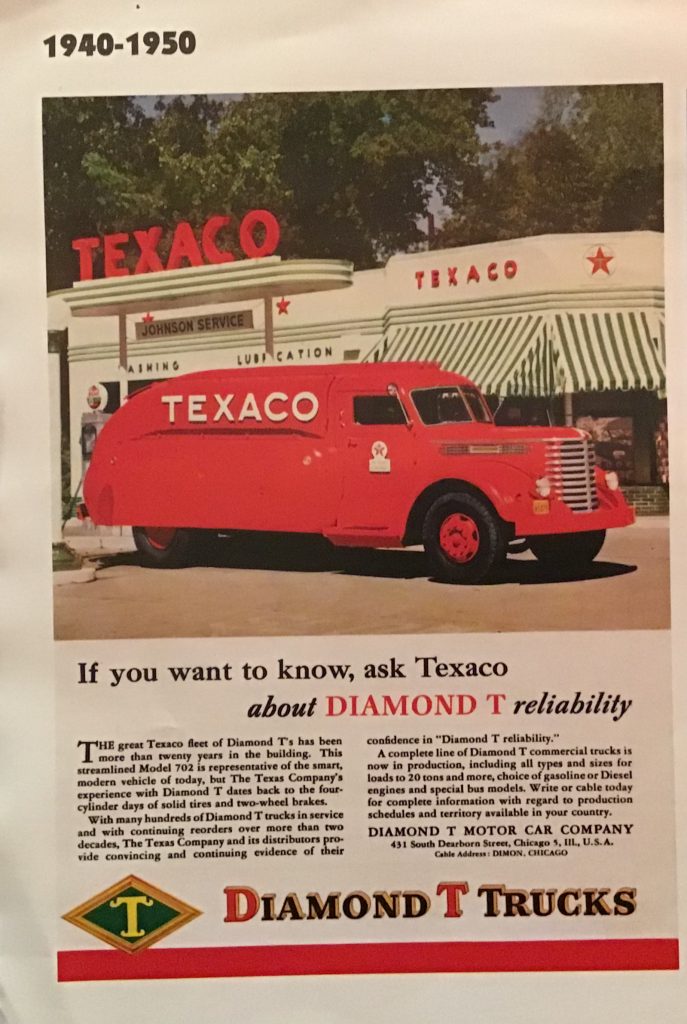
If we talk about the classification of a specific model, then here we rely not only on a visual comparison of our car with the samples we found in the archives and with images courtesy of Mr. Jeremy Risdon in the Pomchi Book of Cars, Vans & Light Trucks series, but also on compare of numbers of frames and engines with the numbers of the surviving parts of cars in our or in the collections of other collectors
Except for a large amount of historical information, the rest of the article remains unchanged.
The tricycle, presented in the collection “Motorworld Vyacheslav Sheyanov”, was found in Malaysia in very poor condition. According to the stories of the former owner, it was possible to find out that in the past it was a fire-fighting tricycle, engaged in extinguishing fires and dismantling debris in Japan, and later in Malaysia.
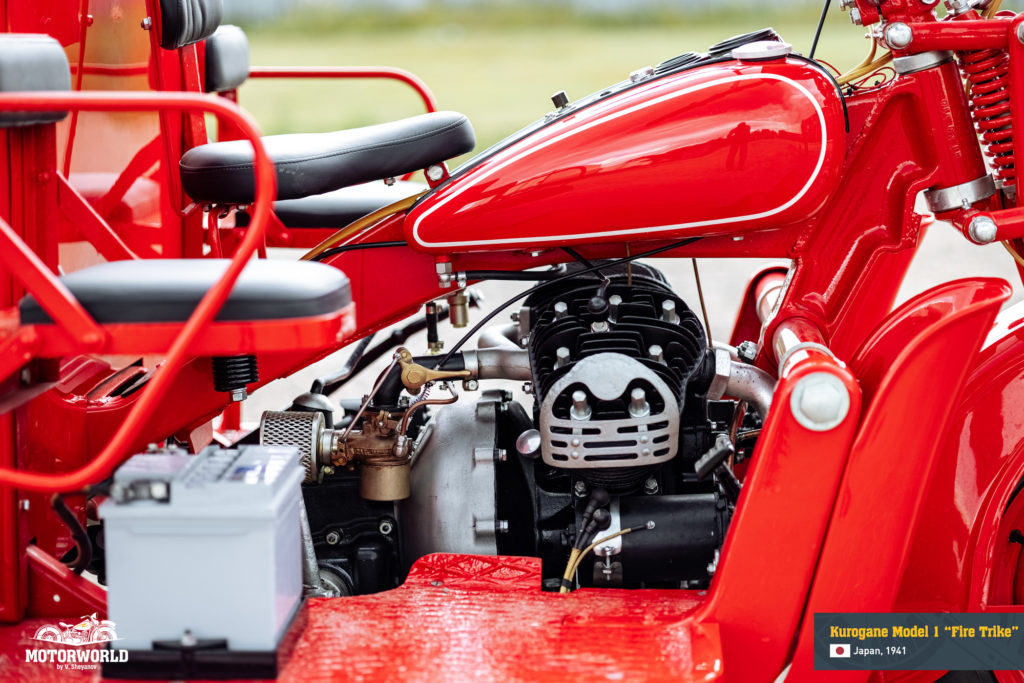
As a power unit on this tricycle, like on many others of that time, a V-shaped lower-valve engine with a volume of 1200 cc was used, deployed across the frame for better cooling. The gearbox is assembled in a separate housing, which makes it easy to access engine parts and replace them if necessary.
The front suspension is parallelogram, the rear is assembled on leaf springs
The fire engine is currently undergoing restoration.
Technical characteristics of the Kurogane Model 1 “Fire Trike”
| Производитель | Nihon Nai-Nenki, Япония |
| Годы выпуска | 1937-1944 |
| Количество, шт | |
| Стоимость | |
| Стоимость в современных ценах |
| ДВИГАТЕЛЬ И ТРАНСМИССИЯ | |
| Тип | 2-цилиндровый, V-образный, воздушное охлаждение |
| Объем двигателя, см3 | 1200 |
| Диаметр и ход поршня, мм | |
| Мощность | |
| Зажигание | |
| Карбюратор | |
| Аккумулятор | |
| Сцепление | |
| Коробка передач | |
| РАМА И КОЛЕСНАЯ БАЗА | |
| Тип рамы | стальная |
| Передняя подвеска | Springer |
| Задняя подвеска | листовые рессоры |
| Тормоза | барбанные |
| Размеры колес | |
| РАЗМЕРЫ | |
| Длина, мм | 3 750 |
| Ширина, мм | 1 680 |
| Высота, мм | 1 780 |
| Колесная база, мм | 2 380 |
| Клиренс, мм | |
| Высота сидения, мм | |
| Масса, кг | |
| Грузоподъемность, кг | |
| Емкость бензобака, л | |
| Максимальная скорость, км/ч |
|
| Дальность, км | |












































